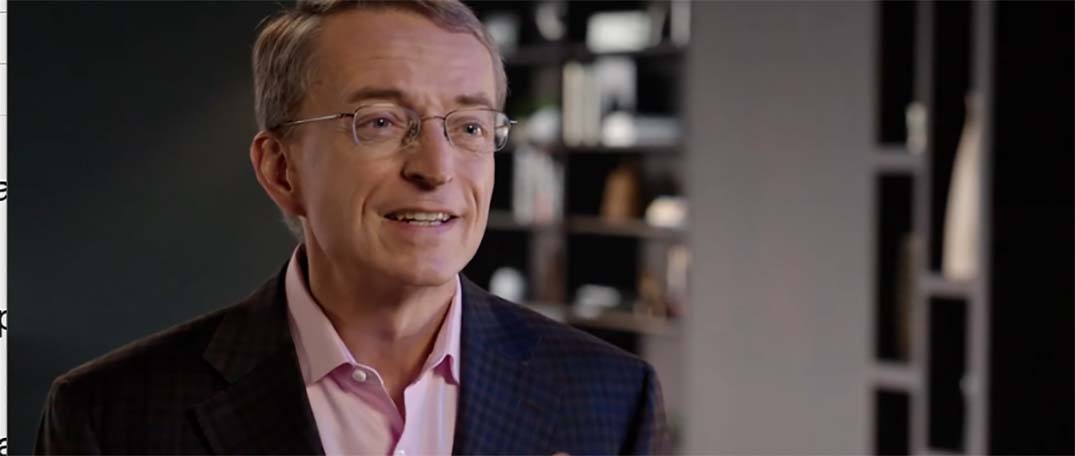Kathy Gibson reports from VMworld 2020 – The world has changed in 2020, and organisations have had to change too.
That’s the overarching message from VMworld 2020, taking place virtually this week.
“2020 has been challenging,” says Pat Gelsinger, CEO of VMware. “We have had to have a profound rethink about the way we work.”
Digital transformation is key to making these changes, Gelsinger points out.
“It’s gratifying to work with our customers as they navigate their way forward.
“In 2020 we have proved that empathy plus urgency is a wonderful combination.”
In the last year, VMware has made a number of acquisitions and advanced its technology solutions to move beyond the infrastructure where it traditionally plays.
“We will continue to be your go-to innovator to all things infrastructure,” Gelsinger says. “But we have gone beyond that: we deliver the digital foundation for an unpredictable world.”
At the core of this foundation is an organisation’s business, apps and data, he adds.
And five building blocks make is possible: app modernisation; multi-cloud; digital workspace; virtual cloud networking; and intrinsic security.
“I have been blown away by the amazing things we’ve seen our customers doing with our technology this year,” Gelsinger says.
“There is a deep sense of urgency, with all organisations under pressure to chart a course forward.
“At the heart of this advancement is software innovation and how you accelerate software that will power your organisations.”
App modernisation is the first imperative, according to Gelsinger. “Twenty-five years ago, Java was introduced as the write once, run anywhere platform for mobile apps.
“The industry is yearning for the same ubiquity that Java offers in the cloud environment. The industry has agreed that Kubernetes is the de facto API for the connected world; it is the rare technology that brings everyone together.”
VMware VMware Tanzu enables developers to get apps into production faster and deliver to any cloud, says Gelsinger. For operations teams, it provides a developer-ready infrastructure. It allows developers to move to an API-ready model.
Launched at VMworld 2020, VMware vSphere has been rearchitected to put Kubernetes at the core.
“It is now the best platform to run virtual and containerised apps,” Gelsinger says.
But what is the future of apps, he asks. “The answer is data – the jet fuel of next-generation services. How can organisations harness data? The answer to this is artificial intelligence.
“Businesses are hungry to tap the potential of AI. But, as exciting as next-generation apps are, they are beyond the reach of mainstream organisations. In fact, enterprise AI is stuck at 10% to 15%.
“But today we are changing that through a strategic partnership with nVidia to unleash AI. We are democratising AI for every enterprise in the world.”
The nVidia AI platform is now on VMware, and the new AI workloads thus enabled will the reinvention of the data centre, Gelsinger says.
“The market is demanding more when it comes to AI, and so we are announcing the next big rearchitecting of vSphere – Project Monterey.
“With Project Monterey, the data centre will be so much more powerful, and so much more performant.”
The new view of multi-cloud is now as the strategic platform needed to move business forward.
“Multi-cloud allows you to leverage the strengths of different services,” Gelsinger explains. “But how can you make sure that it is not a multi-silo story?”
VMware Cloud helps to break down walls and allow workloads to run consistently.
VMware Cloud was first available on AWS, then Microsoft Azure, and today it runs on all the hyperscaler platforms.
“Our role is to be the unifying layer for the multi-cloud world,” Gelsinger says. “VMware Cloud Foundation brings compute, storage, networking and management into one stack.”
VMware Telco Cloud adds value in the rollout of 5G, he adds. “We are excited about the co-innovation we are driving with 5G leaders, who are all looking to an open software approach. In many ways VMware is the operating system for 5G.”
The of the telco cloud is NSX – the same network that powers VMware customers’ businesses, he adds.
As the world move to remote work, resources are being moved out to remote user locations – and this is only possible if the network is software-defined, Gelsinger adds.
As organisations scale their modern apps across multi-clouds, they need to intrinsically secure these apps with a software-defined firewall and security that extends from the edge to the cloud.
To this end, VMware has launched Secure Access Security Edge, a major enhancement to the SD-WAN security network.
“Security is now a core that runs through everything we do; it is an intrinsic security strategy,” Gelsinger says.
“The way we drive a consistent security posture for all apps, data and workloads is by building security controls intrinsically into the infrastructure.”
VMware now serves more than 20 000 security customers, driving a $1-billion business, he adds.
Carbon Black Workload is now native in vSphere and is simplifying operations.
The final pillar of the VMware strategy is the digital workplace.
“We have just experienced the largest workforce migration in history,” Gelsinger says. “Billions switched to a digital distributed model – and most of us did it overnight.
“Workspace One is the leading workspace offering in the industry. It is about increasing employee engagement, which is everything.
“It allows fast access to apps and services, and intrinsic security.”

